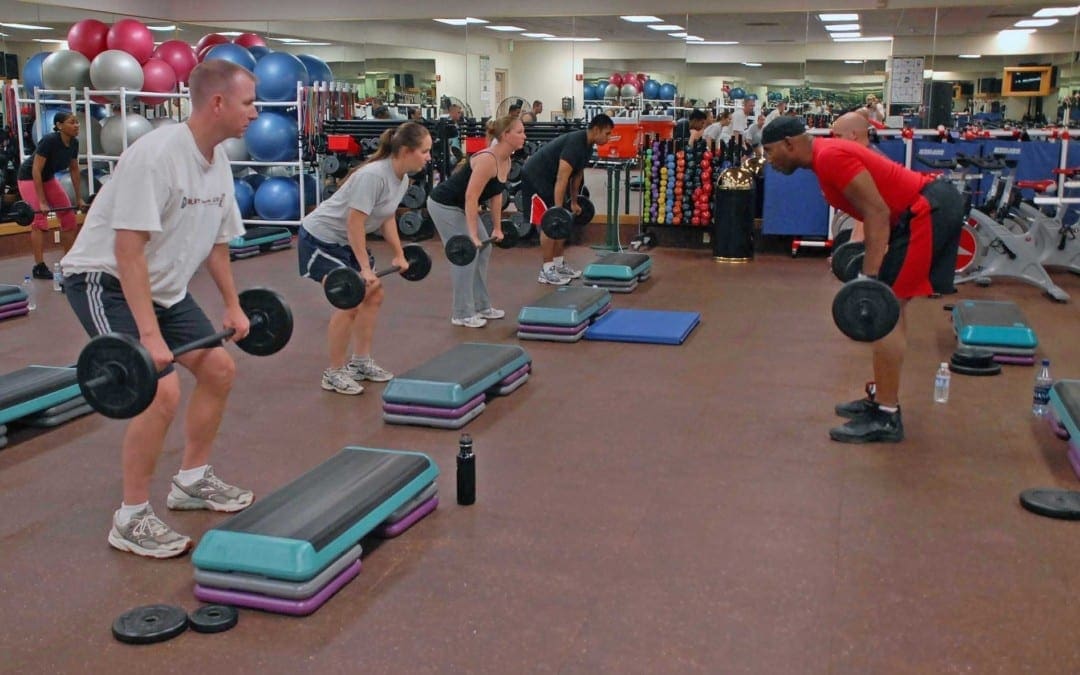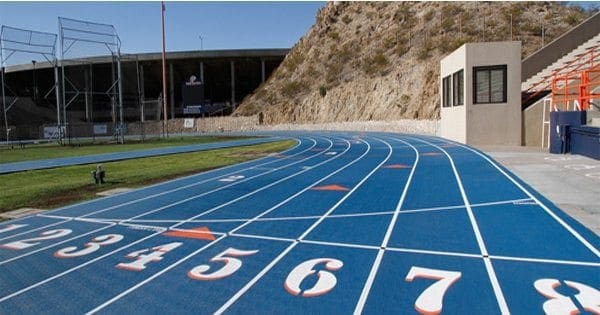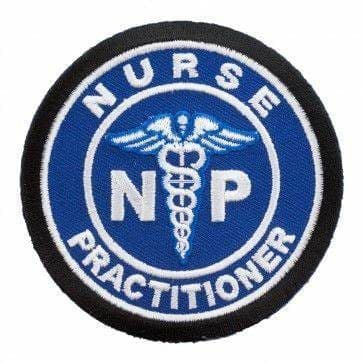
by Dr Alex Jimenez DC, APRN, FNP-BC, CFMP, IFMCP | Fitness, Health, Wellness
Thanks to the Google’s�many clever features, we no longer get lost (as often), bungle dates and double-book, or choose mediocre restaurants. And now�Google is back at it again, with yet another way to simplify your life:�Reserve with Google�is a new platform that makes it super easy�to discover and book fitness classes.
The site�allows you to search your area for upcoming classes, and reserve�and pay for�a spot instantly. If you’re signed into your Google account, some of your info (like your name, email, and phone number) will pre-load to make booking even faster. The service�kicked off in New York, Los Angeles, and San Francisco, and is now available across�the�country, thanks to partnerships with booking services you may already know and love, such as Mindbody,�Genbook, and MyTime.

Reserve with Google�also makes recommendations to help you discover new ways to get your sweat on, complete with�class descriptions, pricing, and reviews�so you know exactly what you’re signing up for. And the �Discover more around you� section groups suggestions into categories like��Yoga this evening� and �Pilates before work.� Really want to mix it up? You can choose Google’s�notorious �I�m feeling lucky” option.
To help you fit your workouts into your schedule,�the service works with Google Maps (so you get a�visual of the closest gyms and studios)�and Google�Calendar (so you can block off precious time).
Whether�you’re looking to try a new activity, or schedule out a full week of exercise, this platform can help you do so seamlessly. And once you’re sufficiently sore, it’ll help�you search�for massage appointments (and other spa services) nearby to help your body bounce back.

by Dr Alex Jimenez DC, APRN, FNP-BC, CFMP, IFMCP | UTEP (Local) RSS
AUSTIN �� Lucia Mokrasova set the school record with 5,671 points in the heptathlon while freshman All-American Michael Saruni broke a meet standard to win the 800m at the 90th Clyde Littlefield Texas Relays, presented by Spectrum on Thursday afternoon at Mike A. Myers Stadium.
�Lucy didn�t have the start that we wanted today, but I think she recovered well and finished strong to break her record from last year,� UTEP head coach Mika Laaksonen said. �She competed well and looks like she has a lot more left in the tank.�
Heading into day two of competition with 3,517 points, Mokrasova opened the day by leaping out to 5.30m (17-4.75) in the long jump, where she earned 643 points. She tallied 666 points after throwing for 39.94m (131-0).
After two events the junior notched 4,942 points and needed to run her time from a year ago (2:22.59) to tie her previous record of 5,615 points. The junior ran a 2:18.44 in the 800m to earn 845 points, breaking her previous record by 56 points.
Mokrasova finished in eighth place in a field of 23 and her total score ranks first in Conference USA.
The other big highlight of day two at the Texas Relays for UTEP Saruni�s star-studded performance. The Kenyan competed in the Invitational (including professionals) 800m run and finished by setting a Texas Relays meet record with the fastest time in the nation (1:48.82). In his heat was the 2012 Olympic silver medialist (Leonel Manzano) and the collegiate record holder (Donavan Brazier). Saruni will participate in the mile run scheduled for Saturday at 2:45 p.m. MT.
�Michael, what can you say a freshman running that times, considering the competition he faced,� Laaksonen said. �For him to come in and break the record is impressive.�
In the women�s Invitational 800m run, Lilian Koech finished in eighth place with a time of 2:11.42. She was the fourth collegiate athlete to finish.
Yanique Bennett clocked a time of 59.92 in the 400m hurdles on her way to a 20th-place finish in a field of 73. Teammate Dreshanae Rolle followed with a time of 1:00.23 to a 24th-place finish.
Cosmas Boit garnered a silver medal in the 1,500m run with a time of 3:49.90 and Daniel Cheruiyot clocked a 9:18.57 to finish in fifth place in the 3,000m steeplechase.
Winny Koech, Gladys Jerotich, Linda Cheruiyot and Antony Kosgei closed out the night in the 5,000m run. Koech (16:22.26) led the way to a gold-place finish with the fifth-fastest time in the nation, Cheruiyot (16:44.76) finished fourth and Jerotich (17:34.28) finished 17th overall. In the men�s race, Kosgei paced to a bronze showing with a time of 14:16.60.

by Dr Alex Jimenez DC, APRN, FNP-BC, CFMP, IFMCP | UTEP (Local) RSS
Related Articles
EL PASO � UTEP Athletic Department officials announced on Wednesday that football series with old Western Athletic Conference (WAC) rivals Nevada and New Mexico have been renewed for future seasons.
�We�re excited to renew rivalries with old WAC foes New Mexico and Nevada,� said head coach Sean Kugler. �Both are teams that El Paso fans are very familiar with and will be excited to see.�
The Miners will play host to the Wolf Pack on Sept. 21, 2019, and travel to Reno, Nevada on Sept. 12, 2020.� UTEP is scheduled to meet the Lobos on Sept. 25, 2021 in the Sun Bowl while paying a visit to Albuquerque, N.M. on Sept. 17, 2022.
UTEP squared off with Nevada on three occasions (2000-02) previously. �The Wolf Pack has a 2-1 series edge, with the Miners emerging triumphant in Reno (45-22) during their WAC championship 2000 season.
The last time the Miners faced the Lobos was in the 2014 season opener at Albuquerque. UTEP defeated New Mexico 31-24 on its way to an appearance in the New Mexico Bowl.
The UTEP-New Mexico series is the second-longest in school history (78 games) next to NM State (94 contests). New Mexico leads the series, 43-32-3. The Miners and the Lobos were joint members of the WAC from 1968-98.

by Dr Alex Jimenez DC, APRN, FNP-BC, CFMP, IFMCP | Diets, Fitness
You probably know that Americans consume way too much salt, but a new U.S. government report points the finger at some surprising sources of salt in the diet.
The report said the top 5 culprits were:
Bread.
Pizza.
Sandwiches.
Cold cuts and cured meats.
Soup.
Surprisingly, potato chips, pretzels and other obviously salty snacks didn’t make it into the top five, though they did ring in at number 7.
“Most Americans are consuming too much salt and it’s coming from a lot of commonly consumed foods — about 25 foods contribute the majority of salt,” said lead researcher Zerleen Quader. She’s an analyst from the U.S. Centers for Disease Control and Prevention.
Knowing which foods contribute the most salt is important for reducing your salt intake, she said.
Sodium is an essential mineral that helps the body maintain fluid balance, according to the American Heart Association. But, too much in the diet increases the risk for high blood pressure, which in turn boosts the risk for heart attack and stroke. Table salt contains about 40 percent sodium. One teaspoon of table salt has 2,300 milligrams (mg) of sodium, which is the maximum amount recommended by health experts.
The new CDC report found that in 2013-2014, Americans consumed about 3,400 mg of salt daily. That far exceeds the recommended amount, and is more than double the American Heart Association’s “ideal” intake of 1,500 mg daily.
And, clearly, all that salt doesn’t come from the salt shaker. Most comes from packaged, processed and restaurant foods, the report said.
Many of these foods contain moderate amounts of salt, but are eaten all day long, Quader said. It’s not necessarily that foods such as bread are high in salt, but eating several slices a day quickly adds to the total amount of salt you consume.
One way to reduce salt is to pay attention to food labels when shopping and choose the lowest salt option, Quader suggested.
“When cooking at home, use fresh herbs and other substitutes for salt. When eating out, you can ask for meals with lower salt,” she added.
Quader said the food industry can help by lowering the amount of salt it adds to its products. Gradually reducing salt in foods can help prevent high blood pressure (“hypertension”) and reduce the risk of cardiovascular disease and won’t even be noticed by consumers, she said.
The CDC researchers found that 44 percent of the salt people eat comes from just 10 foods. These include bread made with yeast, pizza, sandwiches, cold cuts and cured meats, soups, burritos and tacos, salted snacks, chicken, cheese, eggs and omelets.
Seventy percent of salt in the diet is from 25 foods, the report said. Some of the foods included in the top 25 are bacon, salad dressing, French fries and cereal, the researchers found.
In addition, 61 percent of the salt consumed daily comes from store-prepared foods and restaurant meals. Restaurants have the saltiest foods, Quader said.
Processed foods not only raise blood pressure, but may also increase the risk for cancer, one nutritionist said.
Samantha Heller is a senior clinical nutritionist at New York University Medical Center in New York City.
“Processed meats such as bologna, ham, bacon and sausage, and hot dogs have been classified as carcinogens by the World Health Organization,” Heller said.
In addition, these and other highly processed foods are huge contributors to the excess salt in the Western diet.
“Parents need to understand that feeding hot dogs, fries, and ham and cheese sandwiches to their kids (and themselves) is significantly increasing their risk for certain cancers, hypertension and heart disease,” Heller said.
Lowering salt in your diet is “as simple and as difficult as cooking at home and using fresh ingredients, as often as possible,” she suggested.
“This can save money and time in the long run, and certainly is better for our health,” Heller said. “It may take some time to re-pattern your shopping and eating habits, but your health is worth it.”
The report was published March 31 in the CDC’s Morbidity and Mortality Weekly Report.

by Dr Alex Jimenez DC, APRN, FNP-BC, CFMP, IFMCP | Fitness, Health, Wellness
Your schedule is jam-packed, and you’ve lost all hope of making it to the gym. But here’s some good news: You can still fit in a serious workout�even when you have almost zero�time. Really!
Research suggests that a 10-minute sweat session with�1 minute of high-intensity exercise (think�sprints, on foot�or a stationary bike) can lead to the same benefits�including�improved cardiovascular�health,�increased endurance, and fat percentage loss�as exercising at a moderate pace for 45 minutes.
If you’re wondering how that could possibly be, it’s all explained in the new book�The One-Minute Workout:�Science Shows a Way to Get Fit That’s Smarter, Faster, Shorter�($27; amazon.com). Author Martin Gibala, PhD, is the chair of the kinesiology�department at McMaster University and�the pioneering researcher behind�ultralow-volume exercise.
“We have this notion that it takes at least an hour to get in a good workout�more if you factor in the time required to get to and from the gym,” he writes. “My studies show that idea is nonsense.” Below, Gibala�shares two routines from his book that deliver maximum results in minimal time.
The One-Minute Workout
“[T]his protocol can be used by almost anyone who wishes to improve or maintain cardiovascular fitness in the most time-efficient manner science has yet discovered,” Gibala writes.
Peak Intensity:�10+
Duration:�10 minutes, with just 1 minute of hard exercise
1. Warm up with some light physical activity for 3 minutes at an easy pace.
2. Blast through a 20-second sprint at an all-out pace.
3. Rest with some light activity at intensity 1 for 2 minutes.
4. Blast through another 20-second sprint.
5. Repeat the cycle until you�ve completed 3 sprints.
6. End with a 2-minute cool-down for a total duration of 10 minutes.
Feel free to customize the sprint activity to any full-body movement that significantly elevates your heart rate.
RELATED:�How to Make a Fat-Burning Tea with Ginger, Lemon, and Honey
The Go-To Workout
“If I could only do one type of workout, it would be this one,” Gibala says in his book. “It includes some of the best elements of the most time-efficient workouts in this book, including body-weight training for upper- and lower-body strength and active recovery periods that keep the heart rate elevated for cardiovascular training.”
Peak Intensity � 10
Duration � 10 minutes
1. As a warm-up, perform 30 seconds of jumping jacks.
2. Alternate bodyweight resistance-training exercises with some type of cardiovascular exercise in repeating 30-second intervals. The bodyweight exercises should be performed hard, at an intensity of 10, such that you �fail� or are unable to perform any additional repetitions at the end of the 30-second period. Reduce the intensity somewhat during the cardio intervals in between, but the pace should remain vigorous, perhaps starting out at an exertion of 5 and progressing to an 8. So while these are �recovery� intervals in between the bodyweight exercises, your heart rate remains high throughout the entire 10-minute workout, providing an effective cardiovascular training stimulus.
3. The bodyweight intervals should incorporate upper- and lower-body exercises. One great combination is push-ups, pull-ups, and air squats. If you�re unable to conduct the exercise for the whole 30-second interval, just do as many as you can. Also, feel free to work in such other exercises as mountain climbers, burpees, or lunges.
4. The cardiovascular exercise could be cycling, climbing stairs, or running a predetermined �lap� around a park or even briskly in place. You could stick with one type of exercise or vary this throughout the workout.
And you�re done! Congratulations�you�ve just employed a variety of the most potent, scientifically proven fitness and strength-boosting techniques to improve health, in only 10 minutes!
Reprinted from The One Minute Workout by arrangement with Avery, a member of Penguin Group (USA) LLC, A Penguin Random House Company. Copyright�2017, Martin Gibala, PhD

by Dr Alex Jimenez DC, APRN, FNP-BC, CFMP, IFMCP | UTEP (Local) RSS
The UTEP softball team, after its eight-game home stand, will take the road again as San Antonio is the next destination point for five games.
UTEP will take on Conference USA West Division foe UTSA on April 1-2 and will follow with a two-game set at Incarnate Word on April 3.
The Miners (8-23, 3-6 C-USA) and the Roadrunners (12-21, 2-7 C-USA) will start their two-game set on Saturday, starting at noon MT/1 p.m. CT, while the series finale is at noon MT on Sunday. The Miners will then play their final nonconference contests, facing the Cardinals (5-26) in a doubleheader starting at noon MT.
UTEP is coming off its first home stand of 2017. The Miners tallied a pair of victories against Middle Tennessee, a 7-6 win on March 18 and a 10-7 triumph on March 19. The Orange and Blue registered a run-rule win over Southern Miss, 12-2 (5), on March 25.
Following the San Antonio road trip, the Miners will return to Helen of Troy to host WKU April 8-9 and will hit the road again at LA Tech on Easter Weekend prior to the bye week (April 22-23).
UTEP is coming off a pair of losses to rival NM State. The Miners fell in game one, 8-4, but did gather up 14 hits in the contest. It was tied for second most hits against the Aggies during their rivalry. UTEP then fell in game two, 13-4 (5).
ALL-TIME SERIES VS. UTSA
UTEP is 7-12 all-times versus UTSA dating back to Feb. 11, 2005, but has won the last two of three contests. Last season, the Miners won the first two contest on April 2, 5-3 and 9-2. Lindsey Sokoloski was the game one hero when the Miners were down. With the score 3-1 in favor of the Roadrunners, Sokoloski came up with a pinch-hit inside-the-park grand slam in the sixth that propelled the Miners to a 5-3 victory. Kaitlin Fifield picked up the win, throwing a complete game with three strikeouts.
In game two, UTEP won the series on a 9-2 victory.Hope Moreno finished 2-for-5 with a career-high five RBI. Moreno surged the Miners to victory when she connected on a three-run home run during a five-run sixth frame. UTSA rebounded to win game three, 10-5. Kiki Pepi went 2-for-3 with a pair of RBI in the loss. Prior to the two victories last season, the Miners had lost five in a row and eight of nine contests dating back to Feb. 12, 2010. UTEP defeated UTSA, 7-6, during Tobin Echo-Hawk’s first season (2014).
SCOUTING UTSA
The Roadrunners are coming off a 9-1 (5) loss against Texas on March 29 and have fallen to 12-21 overall on the season. UTSA also came off a sweep at North Texas and is now 2-7 in Conference USA action. The Roadrunners’ two C-USA victories came against UAB on March 17 (6-3, 8-0 [6]). UTSA is hitting .304 to rank third in C-USA.
Rylee Rodriguez (.336 avg.) has provided power, leading UTSA with eight home runs (tied fourth in C-USA) and 33 RBI (tied third in C-USA). Lindsey Stewart leads the team with a .395 batting average (45-114) and ranks tied third in C-USA with 45 hits. Lizzy Fox (9-11) leads the pitching staff in wins, ERA (4.26) and innings (97.0). Nicole Merrill leads the team in strikeouts (44) and walked batters (45) in 84.0 innings. As a team, UTSA ranks second to last in ERA (4.74).
ALL-TIME SERIES VS. INCARNATE WORD
UTEP is 5-1 all-time against Incarnate Word dating back to Feb. 14, 2014 – Tobin Echo-Hawk’s first season. The Miners and Cardinals opened the 2016 campaign with Incarnate Word coming out on top, 4-1, on Feb. 11.
The Miners answered with a game two, 13-3 (5), run-rule victory. Kiki Pepi established her career high with five RBI on a 2-for-4 outing, while Courtney Clayton went 4-for-4 and tying her career best with four RBI. Two days laterin Las Cruces, the Miners clipped the Cardinals again, 5-3, behind a RBI each from Clayton, Danielle Pearsonand Taylor Sargent.
SCOUTING INCARNATE WORD
The Cardinals are currently standing at a 5-26 overall record. One of these wins was over UTSA who the Miners will face in conference play this upcoming weekend. The Cardinals edged their way past the Roadrunners 5-4 in nine innings. Incarnate Word is hitting .228 as a team with senior Danielle Ramirez leading the squad, hitting .400 on 32 hits and three triples.
The Cardinals pitching staff has totaled an ERA of 6.19. Freshman Joanna Valencia has the lowest ERA at 4.87 with two wins and 20 strikeouts.

by Dr Alex Jimenez DC, APRN, FNP-BC, CFMP, IFMCP | Chiropractic, Sciatica, Wellness
What Is Sciatica?
Sciatica specifically refers to pain, weakness, numbness, or tingling in the leg, along the distribution of the the sciatic nerve down the back of the leg. Most commonly however, people will refer to any condition that causes back pain in association with leg symptoms as sciatica.
Common Causes:
True sciatica occurs when there is pressure on, or damage to, the sciatic nerve. This nerve starts in the lower spine and runs down the back of each leg. This nerve controls the muscles of the back of the knee and lower leg and provides senation to the back of the thigh, part of the lower leg and the sole of the foot.
As previously mentioned, the term “sciatica” is often used by patients to describe any condition where there is back pain together with associated leg symptoms. This being the case, there are a number of other conditions that will actually mimic sciatic nerve pain. Sacroiliac joint irritation (sacroiliac joint syndrome), lumbar facet joint irritation (lumbar facet joint syndrome), and piriformis syndrome all frequently produce leg symptoms, and are therefore commonly mistaken for sciatica.

Common Symptoms:
Sciatica pain can vary widely. It may feel like a mild tingling, a dull ache, or even a burning sensation, while in other cases, the pain can be servere enough to make movement practically impossible. Most commonly, sciatica effects only one leg.
Treatment:
Treatment begins with first determining whether a patient is suffering from true sciatic nerve involvement, or if they are actually suffering from one of the other conditions that frequently mimics sciatica. From there treatment is directed towards reducing inflammation, pain, and spasm, while restoring movement and function to the effected spinal levels. Once normal spinal mechanics are restored, patients are given a simple home exercise program in order to help maintain normal function and to help prevent re-occurances.
If you are experiencing symptoms of sciatica call our team at The Chiropractic & Sports Injuries Centre of Georgetown today.
From OHM Space Corporation
What is sciatic nerve pain? Sciatic nerve pain is one of the most tough [ www.youtube.com/watch?v=FUcGA-BvmIQ dolore sciatica] problems for physicians, also those experienced in treating back pain as well as sciatica patients, to determine as well as treat. Sciatica usually presents itself as a prickling and/or numbness, like the sensation one may experience with a pulled hamstring muscle mass, the biceps femoris at the back of the leg. The experience could be plain, almost an ache, with durations of prickling and/or tingling happening throughout specific activities. The prickling and/or numbness experienced, if not dealt with, may develop into a full-on constantly [ www.youtube.com/watch?v=SrFQWAtJtZU click resources] severe phase with discomfort capturing throughout the butts and also radiating down the leg. Sciatic nerve pain might influence one or both legs, typically one, starting as a pain radiating from some point in the lower back, the lumbar spine, after that throughout the gluteal muscle mass (the buttocks), as well as ultimately down the rear of the leg. In innovative instances, sciatic nerve pain gets to right right into the feet as well as toes, triggering discomfort as well as an eventual loss of feeling.
Remarkably, sciatica is not a details condition, it is just a catch-all clinical term put on a constellation of symptoms in order to explain a state the back pain victim remains in. In this instance, sciatic nerve pain is utilized to define a patient’s complaint of pain radiating across the butts, down the leg, and also right into the feet and toes … along with the connected tingling and/or feeling numb. Sciatica could be brought on by a variety of conditions, from stress and anxiety and trauma at a particular area on the spinal column, the reduced back or back curvature, to a much more general condition such as obesity or pregnancy. There are a number of other problems associated with sciatica, all needing varying degrees of clinical intervention and also treatment. A few of the conditions likely to present with sciatica are:
1. Osteomyelitis: An infection of the bone or bone marrow. Osteomyelitis might be debilitating and also in severe cases may also create death. It is tough to identify as well as might go undetected for a long period of time unless appropriate blood examinations are purchased and also the doctor is well trained in contagious diseases influencing the bones.
2. Growths on or near the spine: Lumps, particularly tumors or abnormal growth (e.g., scar tissue) affecting the nerves or nerve roots as they exit the spinal canal and intervertebral foramen, will certainly sciatic nerve pain or sciatic nerve pain.
3. Degenerative Disc Disease: Again, degenerative disc condition is not an illness anymore than sciatic nerve pain, called sciatica, is a specific problem. Degenerative disc condition is a break down of the IVDs, the intervertebral discs, and also is generally an effect old combined with the any or every one of the 5 primary elements influencing the spine as we age.
o Excess weight and/or obesity
o Muscle weakness
o Muscle Imbalance
o Poor nourishment and also diet plan
o Poor hydration or dehydration
4. Herniated (i.e., burst) or protruding disc: This problem might be particularly bothersome if the herniated disc or bulging disc is extending posteriorly (to the back) and right into the spine canal, or impinging on the nerve origin at the intervertebral foramen, hence putting pressure on the spine and/or nerve root; and, sciatica is the result in lots of instances.

Call Today!
















